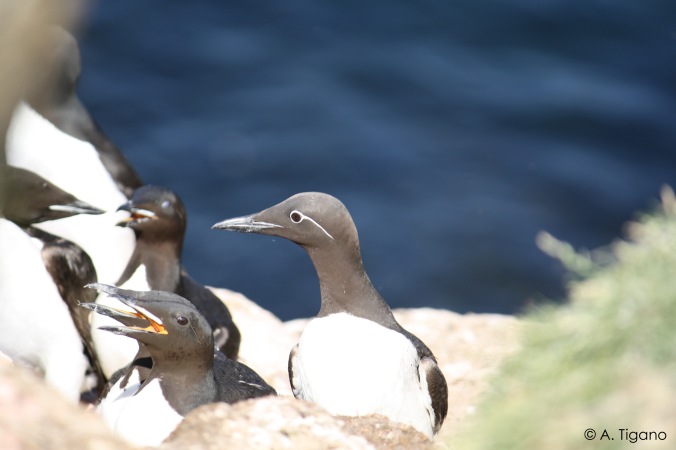This week Dispatches from the Field welcomes guest blogger Anna Tigano, a PhD candidate at Queen’s University, to tell us about her adventures in the Canadian subarctic. To learn more about Anna, check out her profile at the end of her post.
Polar bears. For weeks before my first field-season in the Arctic, I couldn’t think about anything else. I would think of polar bears, and I would dream of polar bears. Very vivid dreams, based on the stories of my collaborators and colleagues that had already been in the Arctic, populated my nights. It was not all about fear. The possibility of seeing a polar bear in the wild thrilled me, along with going to the Arctic and getting to see my study species for the first time.
But let’s step back for a moment, because a bit of background will illustrate the idea of how new all this truly was to me. I am from Italy, and did most of my studies in marine biology there. I did have field-work experience: Gold Coast in Australia, rocky shores and sandy beaches, snails. For my PhD, I’m working on the genomics of adaptations in arctic seabirds. Now you see that the only thing my Arctic experience had in common with my previous experience was the blue of the ocean.
A big part of my PhD project focuses on common murres, which are very fascinating because they’re found in two morphs that show different adaptations to cold, and I want to get at the genomic basis of these differences. So in summer 2013, I joined an expedition to the Gannet Islands, an archipelago of seven small islands off the coast of Labrador, which is also an ecological reserve, accessible only to researchers. There is always something special about visiting a place that most people cannot access. I felt so privileged, and I still do.
Once I got to Goose Bay in Labrador, and after gathering and organizing all the necessary equipment, we drove to Cartwright: 400 km of gravel pit road through the forest with no human settlement, no city, no village, nothing at all. The forest was only interrupted every now and then by small lakes and rivers, which reflected the stunning blue of the sky. We just had to be careful about moose potentially crossing the road, but we managed to arrive in one piece in Cartwright, a small isolated village on the coast. We then left for the Gannet Islands. During the three hour boat ride, we saw whales, seals, and northern gannets engaging in spectacular kamikaze-like plunge-dives. And then, with the first murres and puffins foraging around the islands, came an explosion of life, and sounds – and smell, that peculiar birdy-fishy smell, which I eventually started to appreciate.
A week went by very quickly, between storms and the most amazing sunsets I had ever seen, ‘glamorous’ cocktails made with iceberg ice, and a lot of sampling of murres, razorbills and puffins.
While murres and razorbills breed on cliffs, puffins dig and live in burrows. This means sticking your arm in a hole up to your shoulder and waiting for a puffin to bite you. The first time I was a bit puzzled. I kept asking myself, ‘Are you really doing something that will certainly end up with a bite?’
And what about polar bears, you may wonder. As soon as we relaxed a bit, thinking that the archipelago was bear-free, here it was: a young polar bear wandering around. At that point, after checking we were safe, we went back to the cabin and packed everything up as fast as possible and left the island. And the funny thing is that in the end I was so happy I had seen a polar bear, that I was not even scared.
Anna Tigano completed her BSc in Biology and an MSc in Biological Monitoring at the University of Genova. She undertook a second MSc in Ecology, Evolution and Evolution at Imperial College London, where she worked on the population genetic structure of the portuguese dogfish in the Northeast Atlantic in collaboration with Rus Hoelzel from Durham University. Anna started her PhD at Queen’s University in 2012, which is focused on the genomics of adaptation in two arctic seabird species, the thick-billed and the common murres.



Pingback: Morsels For The Mind – 05/12/2014 › Six Incredible Things Before Breakfast
Pingback: Dispatches from the field turns one! | Dispatches from the Field
Pingback: This land is our land | Dispatches from the Field